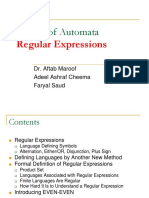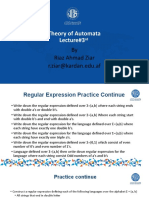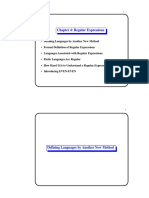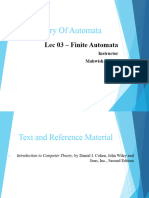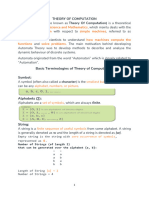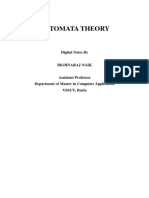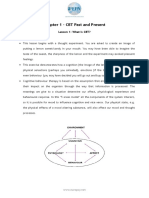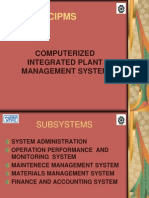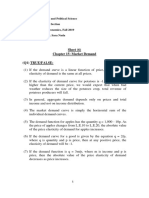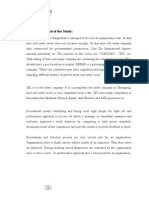0% found this document useful (0 votes)
40 views24 pagesLecture 3
The document discusses regular expressions and their use in defining formal languages. It introduces common regular expression symbols like *, +, and concatenation. Examples are provided to show how regular expressions can define languages over different alphabets containing strings of certain lengths or patterns. An important example defines the EVEN-EVEN language of strings with an even number of a's and b's. It notes that different regular expressions can define the same language, making them equivalent.
Uploaded by
Zohaib MalikCopyright
© © All Rights Reserved
We take content rights seriously. If you suspect this is your content, claim it here.
Available Formats
Download as PPT, PDF, TXT or read online on Scribd
0% found this document useful (0 votes)
40 views24 pagesLecture 3
The document discusses regular expressions and their use in defining formal languages. It introduces common regular expression symbols like *, +, and concatenation. Examples are provided to show how regular expressions can define languages over different alphabets containing strings of certain lengths or patterns. An important example defines the EVEN-EVEN language of strings with an even number of a's and b's. It notes that different regular expressions can define the same language, making them equivalent.
Uploaded by
Zohaib MalikCopyright
© © All Rights Reserved
We take content rights seriously. If you suspect this is your content, claim it here.
Available Formats
Download as PPT, PDF, TXT or read online on Scribd
/ 24



